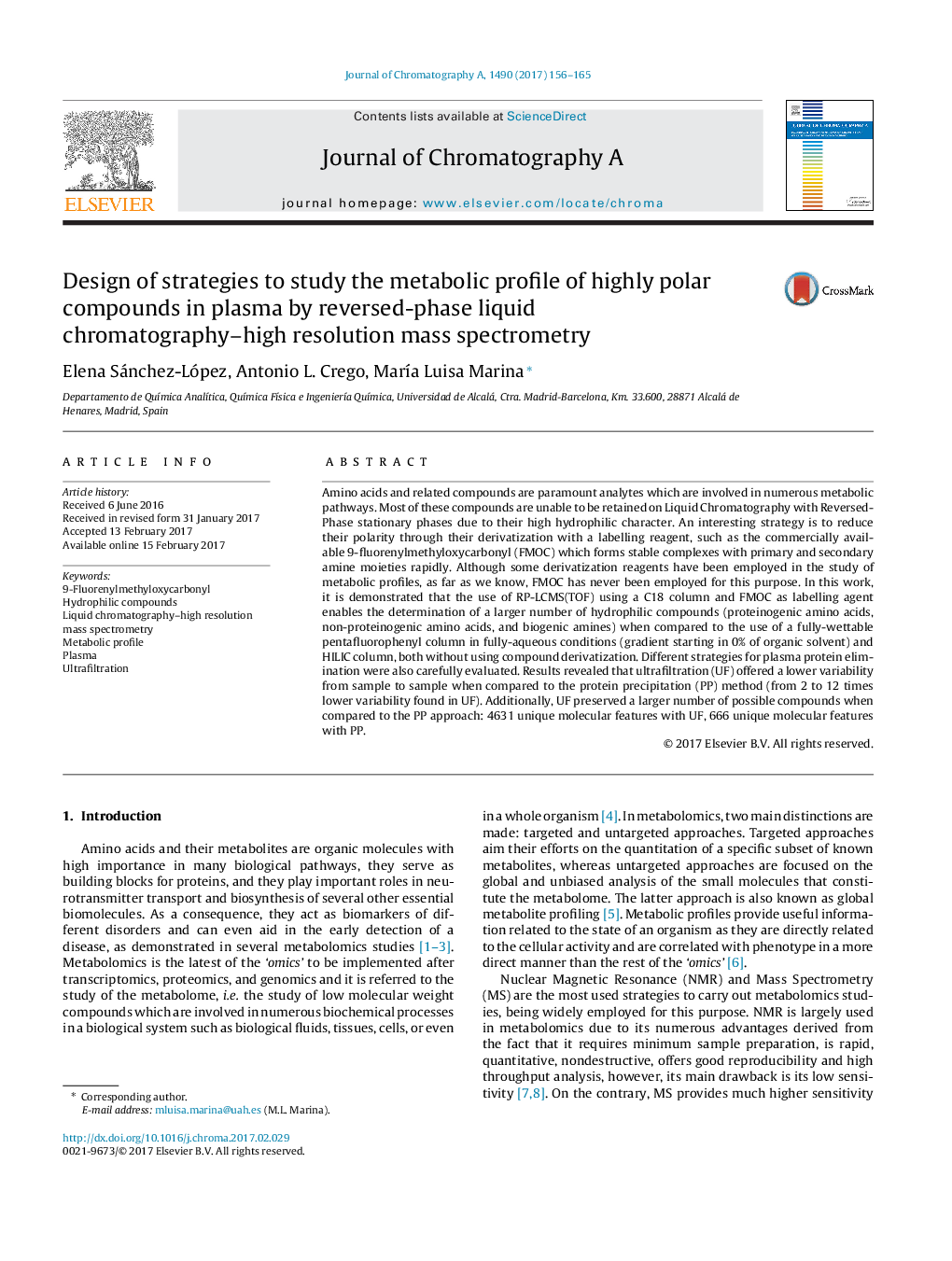| کد مقاله | کد نشریه | سال انتشار | مقاله انگلیسی | نسخه تمام متن |
|---|---|---|---|---|
| 5135691 | 1493436 | 2017 | 10 صفحه PDF | دانلود رایگان |

- For the first time FMOC is used to label plasma in LC-MS.
- A larger number of FMOC compounds retained in RPLC than underivatized in HILIC.
- Ultrafiltration (UF) generate more plasma features than protein precipitation (PP).
- The UF approach offers better repeatability than the PP method.
Amino acids and related compounds are paramount analytes which are involved in numerous metabolic pathways. Most of these compounds are unable to be retained on Liquid Chromatography with Reversed-Phase stationary phases due to their high hydrophilic character. An interesting strategy is to reduce their polarity through their derivatization with a labelling reagent, such as the commercially available 9-fluorenylmethyloxycarbonyl (FMOC) which forms stable complexes with primary and secondary amine moieties rapidly. Although some derivatization reagents have been employed in the study of metabolic profiles, as far as we know, FMOC has never been employed for this purpose. In this work, it is demonstrated that the use of RP-LCMS(TOF) using a C18 column and FMOC as labelling agent enables the determination of a larger number of hydrophilic compounds (proteinogenic amino acids, non-proteinogenic amino acids, and biogenic amines) when compared to the use of a fully-wettable pentafluorophenyl column in fully-aqueous conditions (gradient starting in 0% of organic solvent) and HILIC column, both without using compound derivatization. Different strategies for plasma protein elimination were also carefully evaluated. Results revealed that ultrafiltration (UF) offered a lower variability from sample to sample when compared to the protein precipitation (PP) method (from 2 to 12 times lower variability found in UF). Additionally, UF preserved a larger number of possible compounds when compared to the PP approach: 4631 unique molecular features with UF, 666 unique molecular features with PP.
Journal: Journal of Chromatography A - Volume 1490, 24 March 2017, Pages 156-165